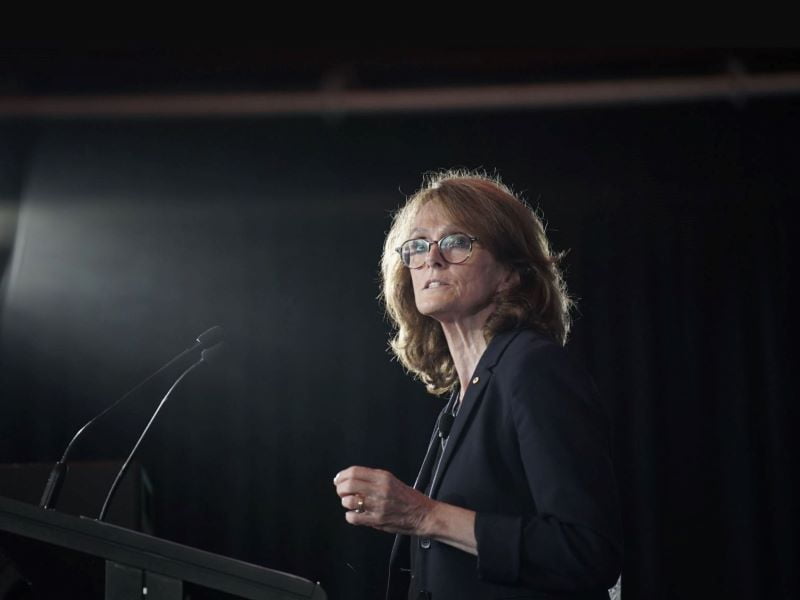There are testing times ahead for Australia’s burgeoning quantum sector, according to Australia’s chief scientist, who on Wednesday warned that local companies are working against history to commercialise and scale their world-leading breakthroughs.
Dr Cathy Foley, who is leading the development of Australia’s first national quantum strategy, said the difficult period could last a decade and present fundamentally different challenges to identify applications, prototype, manufacture, and scale the lab developed technologies.
She said quantum hype may be peaking and the sector could face the disillusionment that often follows emerging technologies before they translate application at scale – not until the mid 2030s in the case of quantum.
“The next probably 10 years are going to be tough,” Dr Foley told a quantum facilities event organised by Sydney Quantum Academy.
“I’m not going to pretend they’re going to be easy as we go into that scale up area and scale up time, and [the] transition of some of the emerging companies that we’ve got [so they] become flourishing companies…[and] are able to really deliver some of their aspirations and see this realisation of something which, to be honest, Australia hasn’t got a fabulous track record in.”

The chief scientist remains confident, however, saying Australia is coming from an excellent base built on decades of research and more than $1 billion invested in quantum.
Dr Foley said to realise the economic potential of quantum in Australia – around 16,000 jobs and $ 4 billion in annual revenue by 2040, according to the CSIRO – the nation needs to be ambitious now.
“We [must] allow ourselves to think big, and that we don’t, what I often say, nibble around the edges, but we actually invest in a way that will lead to the outcomes that are at scale.”
The federal government has recognised quantum as a “critical” technology, including it in the $1 billion emerging technologies sub fund of its $15 billion National Reconstruction Fund, and pledged $3 million to train more quantum PhDs.
But there is still a big gap to fill between now and the 2040 potential of 16000 jobs and $4 billion, Dr Foley said.
She estimated Australia has trained around 2500 quantum PhDs so far, and said to meet the 2040 mark, the rate of students graduating in the area needs to increase six-fold, while the quantum revenue needs to jump eight-fold. She said Australia would only hit this type of scale if “everyone works together” and the sector manages expectations and encourages positivity.
“We need to slap down anybody’s backbiting and [be] saying look, any win is everybody’s win, any loss is everybody’s loss. We need to make sure that as a community, that we’re actually lifting each other up.”
New South Wales chief scientist professor Hugh Durrant-Whyte said Australia’s quantum sector is in a good place, with excellent talent, a growing wider digital sector, and “savvy” investors. But he agreed scale will be a challenge, and suggested new facilities like the state’s new $96 million RNA pilot manufacturing facility could be key
“I wonder whether the right thing…here isn’t to do something like what we’ve done in the RNA area, which is actually really try and look at what pilot facility might actually be the transition point to allow things to scale to the point where they genuinely look like they could be commercial but not quite manufacturing.”
Earlier on Wednesday, a collection of quantum companies joined under the Tech Council of Australia to create the Australian Quantum Alliance to give the industry a “common voice” in the emerging policy and industry conversations.
Do you know more? Contact James Riley via Email.

